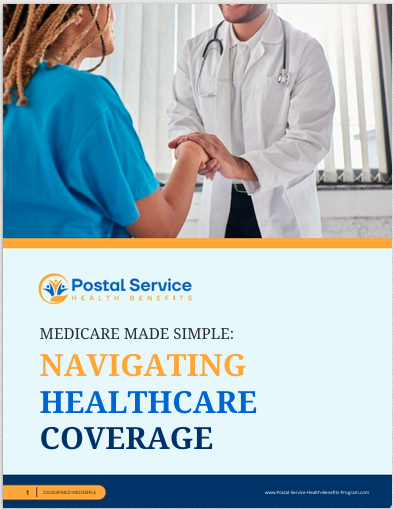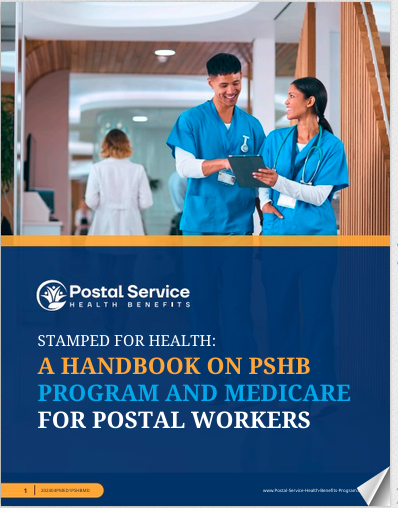Key Takeaways
-
Medicare Part B is critical for covering essential outpatient medical services and can significantly reduce your out-of-pocket costs under the Postal Service Health Benefits (PSHB) program.
-
Enrolling in Part B ensures seamless integration with PSHB coverage, leading to better access to care and financial savings.
Understanding Medicare Part B and Why It Matters
Medicare Part B serves as the cornerstone of outpatient medical coverage. If you’re enrolled in the Postal Service Health Benefits (PSHB) program, understanding the role of Part B can help you make informed decisions about your healthcare. Whether it’s doctor visits, preventive care, or durable medical equipment, Medicare Part B fills gaps that can otherwise lead to substantial costs.
What Does Medicare Part B Cover?
Medicare Part B focuses on outpatient care, offering a wide range of essential services. Here are some of the key categories of coverage:
-
Preventive Services: Annual wellness visits, screenings, and vaccinations that keep you healthy.
-
Diagnostic Services: Lab tests, imaging, and evaluations to diagnose illnesses or conditions.
-
Outpatient Treatment: Services provided outside hospital settings, such as physical therapy and minor surgeries.
-
Medical Equipment: Items like walkers, wheelchairs, and oxygen equipment.
-
Mental Health Care: Outpatient counseling and psychiatric services to support emotional well-being.
These benefits ensure you’re covered for everyday healthcare needs that arise outside of inpatient hospital stays.
Integration of Medicare Part B with PSHB Coverage
When you pair Medicare Part B with your PSHB plan, you unlock additional benefits and savings. PSHB plans often work hand-in-hand with Medicare to reduce copayments, coinsurance, and deductibles. This coordination of benefits ensures:
-
Lower Out-of-Pocket Costs: PSHB plans may waive or reduce certain expenses when Medicare is your primary payer.
-
Comprehensive Coverage: You’ll have access to an extensive network of providers and services.
-
Simplified Claims Processing: Medicare handles most claims, streamlining paperwork.
How Medicare Part B Can Reduce Costs
Enrolling in Medicare Part B alongside your PSHB coverage can lead to substantial savings over time. Here’s how:
-
Reduced Deductibles: Many PSHB plans waive deductibles for Medicare enrollees.
-
Lower Coinsurance: Medicare typically covers 80% of approved costs, leaving you with only 20%. PSHB may cover some or all of the remaining balance.
-
Preventive Care Savings: Medicare fully covers preventive services, eliminating out-of-pocket costs for essential screenings and vaccinations.
-
Prescription Drug Benefits: While Part B isn’t primarily focused on medications, it does cover certain drugs administered in outpatient settings, like chemotherapy.
Why Enrolling in Medicare Part B Is Mandatory for PSHB Members
For most Medicare-eligible PSHB enrollees, joining Part B is not just an option—it’s required. This mandate ensures that both programs work seamlessly together, optimizing your benefits while minimizing costs. Exceptions are rare and typically apply to specific circumstances, such as retiring before January 1, 2025.
Enrollment Periods and Timelines
It’s essential to enroll in Medicare Part B during the appropriate window to avoid penalties. Here are the key timelines:
-
Initial Enrollment Period (IEP): This is a seven-month period starting three months before your 65th birthday month and ending three months after.
-
Special Enrollment Period (SEP): If you’re still working and covered by employer-sponsored insurance, you can enroll without penalties after your employment ends.
-
General Enrollment Period (GEP): From January 1 to March 31 each year, you can enroll, though coverage doesn’t begin until July 1 and penalties may apply.
How Part B Complements Part D Prescription Coverage
While Medicare Part B covers limited outpatient drugs, most medications fall under Medicare Part D. For PSHB enrollees, prescription benefits are integrated into the plan’s offerings, often coordinated with Medicare’s Part D. Having both ensures:
-
Access to a comprehensive formulary of medications.
-
Lower out-of-pocket costs for both brand-name and generic drugs.
-
Annual out-of-pocket caps for prescription costs.
Addressing Common Concerns About Medicare Part B Costs
One of the most frequent concerns is the monthly premium for Medicare Part B. While the premium is an added expense, it’s important to weigh this cost against the savings it provides through reduced deductibles, coinsurance, and out-of-pocket expenses under PSHB. Additionally, many PSHB plans offer reimbursements or premium credits for enrollees who carry both Medicare and PSHB coverage.
Navigating Coordination of Benefits
Once enrolled in Medicare Part B, understanding how it coordinates with PSHB is crucial. Here’s what you need to know:
-
Primary and Secondary Payers: Medicare typically pays first, and PSHB covers any remaining eligible expenses.
-
Claims Processing: Providers bill Medicare directly, simplifying the process for you.
-
Out-of-Network Services: While Medicare has a nationwide network, check how your PSHB plan handles out-of-network providers to avoid surprises.
The Long-Term Financial Benefits of Medicare Part B
Over time, Medicare Part B helps mitigate high medical expenses, particularly for chronic conditions or unforeseen health issues. When paired with PSHB, it provides stability and predictability, protecting you from unexpected financial burdens.
Your Next Steps for Seamless Healthcare Coverage
If you’re approaching Medicare eligibility or already enrolled, it’s time to take action. Here’s what you can do:
-
Review your PSHB plan’s specific benefits and how they integrate with Medicare.
-
Confirm your Medicare Part B enrollment timeline to avoid penalties.
-
Contact Medicare or your PSHB plan for detailed guidance on coverage coordination.
-
Explore any premium reimbursements or additional benefits available under your PSHB plan.
Medicare Part B and PSHB: A Partnership for Your Health
Understanding and enrolling in Medicare Part B isn’t just about meeting a requirement—it’s about securing your access to comprehensive healthcare while reducing costs. The integration of Part B with PSHB ensures you’re protected, informed, and prepared for whatever healthcare needs arise.






